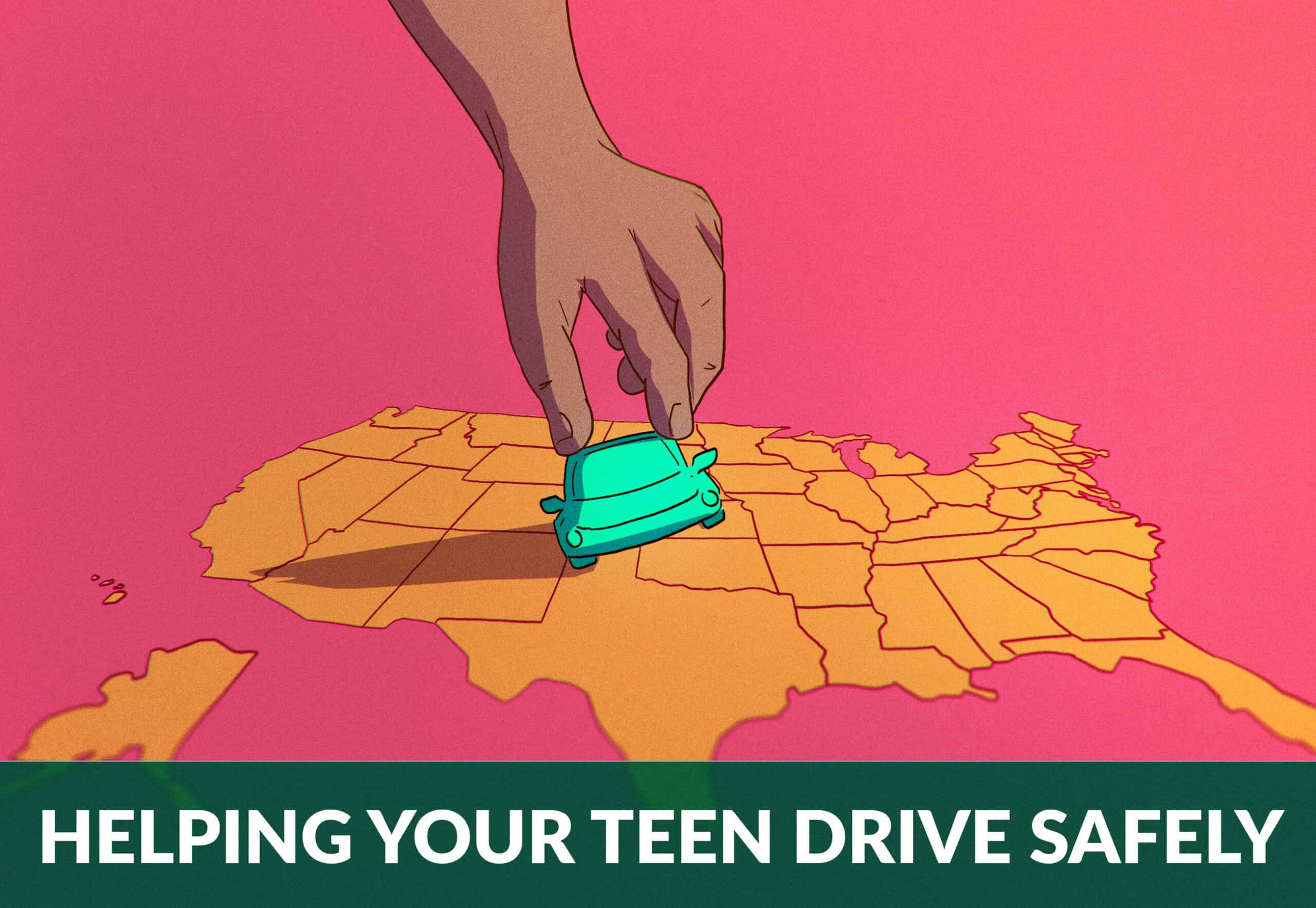
How to Help Your Teen Become a Safe Driver: 10 Tips by Experts
Each year, thousands of teens lose their lives in car crashes, and hundreds of thousands are treated in emergency departments for injuries related to motor vehicle crashes. According to the CDC, teen drivers aged 16-19 are nearly three times as likely as drivers aged 20 or older to be involved in a fatal crash per mile driven.
This is partly due to the fact that teen drivers are less experienced than adult drivers and don’t know how to handle certain driving situations and hazards. It is also due to the fact that teen drivers are more prone to peer pressure, handle stress differently than adults, are more likely to drive distracted and make critical errors, are less likely to think about consequences, and so on. Some teens are better at safe driving than others – for example, males are more likely to exhibit dangerous driving behaviors than females.
Parents must take an active role in training their teens to become safe drivers. But how, exactly? In this article, we’ll go through some of the best tips from experts in drivers education.
10 Tips to Make Your Teen a Safe Driver
By optimizing the training period during the teenage years, parents can help set a solid foundation that will instill safe driving habits that will not only protect your child when they are young, but also keep them (and others) safer as they become more experienced drivers.
1. Be a Good Example
This is probably the most important thing that parents can do to ensure their children become safe and courteous drivers. Children constantly watch their parents and learn their habits, good or bad. This is especially true when it comes to something new and scary, like driving.
Rest assured that children are watching whether parents speed, drink alcohol and drive, text or call on the road, or behave courteously and patiently with others on the road. So, get rid of any bad driving habits to avoid the risk of your child mimicking that behavior.

2. Enroll Your Teen in Drivers’ Education
Most states have a graduated driving program for teenagers, providing plenty of opportunities to study the rules of the road, restricted levels of licenses, and expert instruction by licensed driving programs. Students who advance through each level of these graduated programs will have a good foundation for safe driving habits. Even if it’s not mandated by state law, make sure that your child goes through a proper driver’s education course like Zutobi before getting behind the wheel.
3. Provide Plenty of Practice
Most states require a certain number of hours behind the wheel before granting a driver’s license. Learners may need to complete a supervised driving log, which notes the date and time driving practice occurred with a parent or supervising adult. Most states also require a set number of nighttime driving hours, and some northern states may require a certain number of hours driving in winter weather.
Parents must optimize this practice time, ensuring that children get a varied number of experiences. Practice during the day and extra at night and on both urban and rural roads. Allow children plenty of highway driving time both with light and heavy traffic flows. Practice during inclement weather. Remember that requirements are a minimum; the more practice your teenagers get, the better.

4. Insist on Seat Belts for All
The evidence is clear that seat belts save lives. Parents need to set an example, ensuring that every passenger is buckled up in both the front and back seats anytime the vehicle is moving. According to the NHTSA, seatbelt usage is lowest for 16 to 24 year-olds.

5. Do Not Tolerate Drinking or Impaired Driving
Inexperience combined with any impairment including alcohol, lack of sleep, illness, or medications can increase the risk of a crash substantially. Drunk driving remains a huge issue for teenage drivers in the US. In 2019, 23% of fatally injured drivers aged 16-19 had positive blood alcohol concentrations (BACs).
Set a good example, reinforce the fact that drinking and driving is very dangerous, and establish a zero-tolerance.
6. Limit the Number of Teen Passengers
Many driving programs do not allow teenagers to drive anyone outside of immediate family members for the first six months of having a license. The more teenage passengers in a car, the higher the likelihood of a crash. Loud music, distractions, and showing off while in a car is a recipe for disaster. Parents need to limit the number of friends allowed to ride with their teens before they are comfortable behind the wheel.
7. Eliminate Phone Use While Driving
With teens glued to their smartphones today, it can be tempting to talk or text while driving. Teenagers need to keep their focus 100 percent on the road to accommodate their inexperience. Keeping track of the vehicle’s operation while staying alert to what other drivers, pedestrians, and bicyclists are doing is critical to safety.
Like with drunk driving, establish a zero-tolerance when it comes to mobile phones and driving. And remember to set a good example and put away your phone as well.
8. Establish an Escape Plan for Unsafe Situations
On a related note, parents need to give teens the right words to say if they feel they are in an unsafe car or situation. If they are relying on someone else for a ride and that individual is impaired, they need the courage to refuse a ride, stand up to peer pressure, and have an alternative transportation option. Practicing such situations before they occur is key to a positive outcome.
9. Draw Up a Written Agreement
It may sound corny, but having a written agreement between parent and teen can make a difference. Parents need to talk with teens about the expectations and responsibilities of driving, and they need to agree about the terms of using the family car or even driving their own vehicle. Having a formal agreement can make sure everyone is on the same page and help solidify the agreements.
10. Enforce Consequences for Bad Decisions
Be sure you have an action plan for breaches of your parent-teen agreement or any (hopefully) minor accidents that may occur. This may include losing driving privileges for a certain amount of time, paying for damages, or taking on the increase in insurance premiums that may result.

600+ exam-like questions and practice tests
Easy summarized DMV handbook
America’s #1 driver’s ed app with a 95.8% pass rate
Recommended articles
Ace your DMV test, guaranteed
Want to Be the Top School in Your Area?
- Simple & automated admin
- More time for teaching
- #1 learning materials for students


